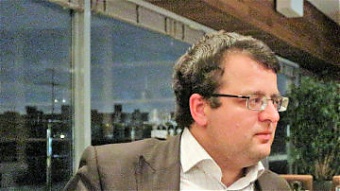Direct Speech, Energy, EU – Baltic States
International Internet Magazine. Baltic States news & analytics
Tuesday, 23.04.2024, 16:29
The Energy Union: Old Wine in a New Bottle?
 Print version
Print version |
|---|
This ‘umbrella strategy’ was also designed to fight climate
change and create new ‘green’ jobs as well as a new type of sustainable
economic growth in Europe. Last but not least: determination to reduce Europe’s
fossil fuel import bill also drove the initiative.
As surprising as it might seem, Europe is already close to
achieving these goals even with the current market design. Furthermore, the EU
has already all necessary instruments to implement the key goals of the Energy
Union. The completion of a single energy market will make the criteria of
reliability, competitiveness and security of supply – mentioned as the key
priorities of the Energy Union – less relevant, if not outdated, even with
present energy regulations.
The single gas market increased competition and consumers in
Europe have a vast of choice of alternative supplies – both in the form of LNG
and pipeline gas –and they appear to feel comfortable with this choice. In a
lunchtime press briefing on February 1, 2017 EU Commissioner Maros Sefcovic
said that in regard to energy security, the situation has significantly
improved in 22 out of 28 countries. This was due to better pipeline links
between member states, together with significant improvements of energy
efficiency and increased use of renewables.
Total European (EU28 plus Turkey) regasification capacity by the end of 2016 stood at 216 billion cubic meters (bcm), amounting to 40% of EU demand and 55-60 per cent of EU gas imports. This capacity allows (in theory) the full replacement of pipeline imports from either Norway or Russia which last year respectively exported to the EU28 107 bcm and 153 bcm.
Furthermore, pipeline interconnectors
also contributed to a free flow of energy across borders and a secure supply in
virtually every EU country. In 2015 Central and Eastern Europe (CEE) reverse
flow capacity stood at about 147 bcm/year, while a further 42 bcm/year of new
interconnection capacity added within Eastern Europe and between Central and
Western Europe in 2010 - 2015. Interconnectors had already managed to changed
supply dynamics with gas deliveries shifting directions from “east-west to
“west-east”. For example, gas flows from Germany to Czech Republic went
up from 8.7 bcm in 2011 to 35.6 bcm in 2015. The increased
interconnectivity has led to price alignment almost everywhere in Europe with
the higher priced markets now almost equal with the cheaper ones, and so making
gas more affordable.
This connectivity also helped to spread the sense of
confidence that exists in the mature markets in western Europe to the new
member states. Gas is therefore becoming an ‘ordinary’ source of energy which
can be sourced almost everywhere and its source of origin will be no longer a
matter of concern for energy importing countries. In 2016 the use of LNG
re-gasification terminals went down, thanks to the arrival of cheaper pipeline
gas supplies, mostly from Russia. In January - April 2016, the average use of
Europe’s re-gasification capacity was only 17%, while two thirds of the
increase in Europe’s gas imports –around 30bcm in 2016 – was covered by Russia.
These figures show that EU utilities were not afraid of Gazprom and are eager
to buy cheap energy from Russia as they felt confident that they had a back-up
supply option.
Changing market dynamics also forced non-European supplies
to accept the new “rules of the game”. Non-EU companies have realised they are
running the risk of rapidly losing their market share if they cannot effectively
adapt to the new market and regulatory realities. For example, Gazprom, accused
by the European Commission of breaking EU antitrust rules, accepted the
requirement to amend its’ market strategy and it has submitted relevant
commitments to the EC, whose anti-trust directorate has positively assessed
these commitments.
Consequently, the European gas market is finally becoming
depoliticised and natural gas is turning into an ‘ordinary’ commodity – like
oil, where import dependency has become a secondary issue. The case of Sweden
might offer a good example of what will happen with the European gas market.
The share of Russian crude in Sweden’s oil consumption went up from 10% in 2000
to 44% in 2015 but these figures are not generally perceived as a critical
dependence or a security threat. Alternative oil supplies are readily available
and a short transport leg makes Russian crude commercially attractive to
Swedish consumers.
The trend towards de-politicisation is still fragile, but
might gain momentum if both suppliers and consumers were ready to invest in
this relationship and respect the generally accepted “rules of the game” and
each other’s interests. As we see, existing EU regulations and single market
are fully sufficient to regulate supplies from the third countries and address
all relevant consumers’ concerns.
Policy-makers for their part need to keep away from unduly
influencing markets and determining the behavior of energy companies. Markets and consumers could and should decide
which project is more suitable and no energy project should not be
discriminated if it respects market rule.
Disclaimer: The opinions expressed in this article solely
reflect the views of the author.
The article is based on publications initially published
on Flame Conference website on April 25, 2017
and in Natural Gas World on May 2, 2017








 «The Baltic Course» Is Sold and Stays in Business!
«The Baltic Course» Is Sold and Stays in Business!

